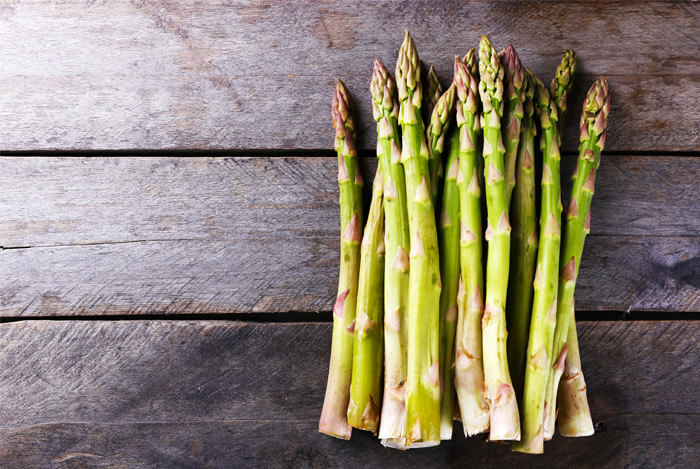According to the Centers for Disease Control and Prevention (CDC), around 12% of women between the ages of 15 and 44 have difficulty getting or staying pregnant. 12% may not seem like a lot, but it means about 7.3 million women struggle to have a child. And that’s a lot.
The CDC defines infertility as “not being able to get pregnant (conceive) after one year of unprotected sex”. But if you’re over 35 or have irregular menstrual cycles, your window of time to get pregnant before being labeled as fertility challenged is only six months.
Well, one of the best things you can do is get to a healthy weight. And that starts with eating a healthy diet. Here are 12 healthy foods to get you on the right track.
- Get to a Healthy Weight
- Pump Up The Iron
- Vitamin C for Fertility
- Up Your Protein
- Essential Fatty Acids
- Folic Acid
- Best Fertility-Boosting Foods for Men
Table of Contents
+Get to a Healthy Weight
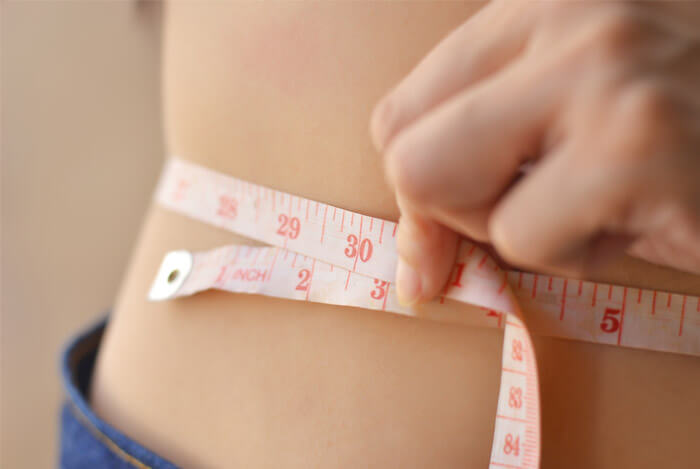
Being under or overweight can affect your ability to ovulate.
If you don’t ovulate, you can’t get pregnant; period.
So if you’re planning to get pregnant, try to figure out your Body Mass Index (BMI).
There are loads of BMI calculators online and they’re super easy to use. You just have to plug in your height and your weight and the calculator will give you a score from zero to 30 or greater.
Here’s what the numbers on the BMI scale mean:
- BMI of less than 18.5 = Underweight
- 18.5–24.9 = Normal weight
- 25–29.9 = Overweight
- 30 or greater = Obese
Experts consider the normal weight category (BMI 18.5-24.9) as the “fertility zone”, aka where you want to be. Keep in mind that this number doesn’t take muscle mass into account, it’s just an estimate of body fat.
If you’re an athlete with lots of muscle, you may be better off with a body fat percentage calculator instead. It’s a little more in depth, but it will provide you with a better idea of where you fall.
Now let’s check out some healthy food options for trying to reach a better body weight.
Pump Up The Iron
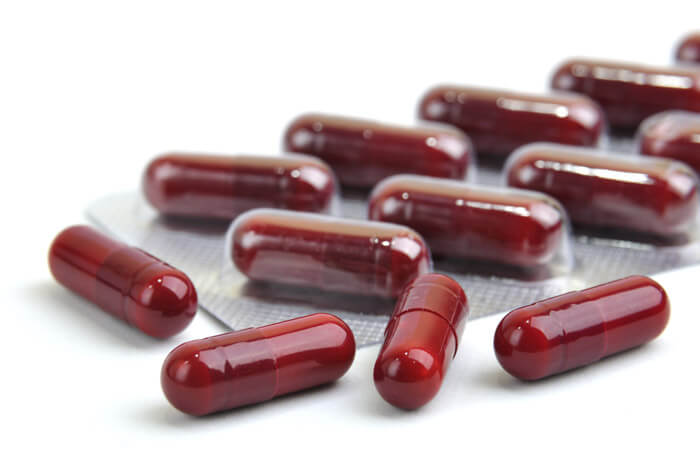
Your iron stores are depleted every month during menstruation.
The researchers in one study discovered that:
“Women who do not get sufficient amounts of iron may suffer lack of ovulation and possibly poor egg health, which can inhibit pregnancy at a rate 60% higher than those with sufficient iron stores in their blood”.
You should be aiming for 18 mg of iron every day, and when you’re pregnant you’re going to need about 27 mg daily.
Keep those iron reserves full before you’re pregnant.
When you’re low on iron during your pregnancy, you become at risk for postpartum anemia, which will cause your energy levels to drain – not something you want when a new baby will be depending on you for everything.
The most easily absorbed iron comes from meat sources like liver, fish, lean beef, pork, and poultry (dark meat especially). While there’s iron in veggies, it isn’t as readily absorbed as iron from meat sources.
If you’re a vegan or vegetarian, you may need to take an iron supplement to ensure you’re at optimum levels.
Here are three iron-rich foods to add to your diet.
1. Pumpkin Seeds

One cup of pumpkin seed kernels packs 20.7 mg of iron, or 115% of your daily value.
I love snacking on roasted, unsalted pepitas, but you could also sprinkle them on top of soups, salads, yogurt, and even use them in your fall baking.
Seriously, do you need another reason to enjoy all things pumpkin this fall? Didn’t think so.
2. Oysters
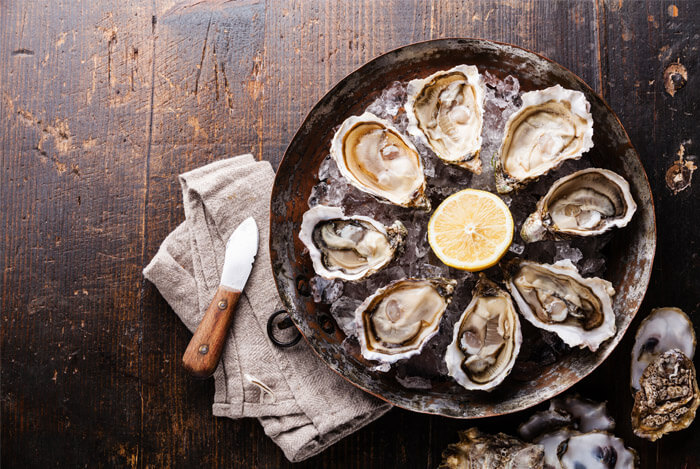
One medium raw oyster also contains 2.6 mg of iron (14% DV).
If you eat half a dozen of these, you’ll be close to your daily requirement.
3. Spinach
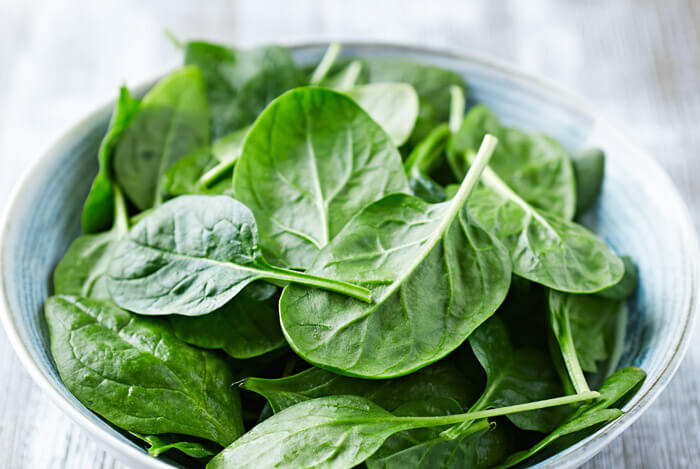
Raw leafy greens such as spinach, swiss chard, and kale are all great sources of iron. But cooking these veggies increases their iron levels and helps your body absorb this crucial mineral better.
Just one cup of cooked spinach has over 6 mg of iron.
Cooking in a cast iron pan may even raise those levels a bit more.
Vitamin C for Fertility
Besides aiding in iron absorption, vitamin C increases the levels of progesterone, a hormone responsible for regulating the menstrual cycle and thickening the lining of the uterus.
In one study, women at healthy weights diagnosed with “unexplained infertility” decreased their time to get pregnant by consuming more vitamin C from their diets.
Are you getting the recommended 75 mg of vitamin C every day?
4. Citrus Fruit
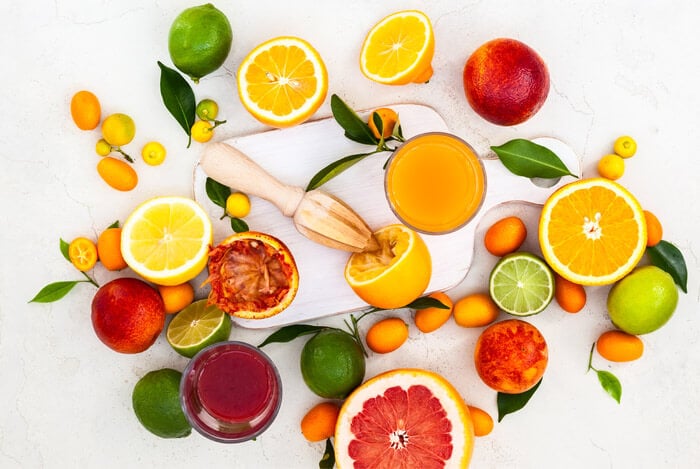
Even though all citrus fruits make excellent sources of vitamin C, here’s how they all compare:
- 1 medium orange = 70 mg of vitamin C
- 1 medium grapefruit = 50 mg
- 1 medium lemon = 40 mg
5. Kiwi
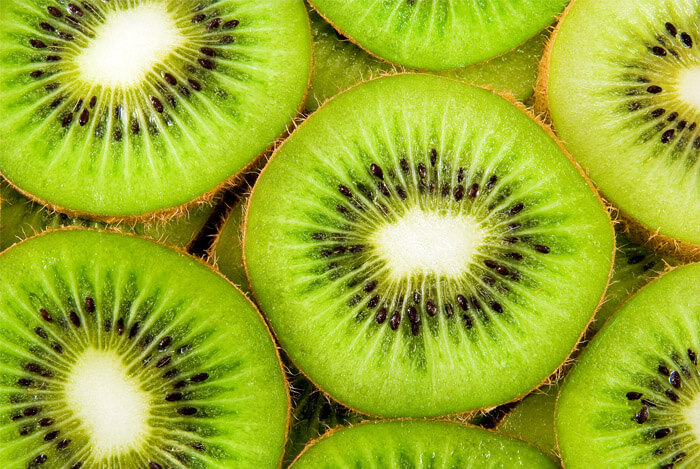
Move aside citrus fruit, kiwis actually contain more vitamin C than oranges, with 100% of your recommended daily value.
One serving of kiwi, which is about 2 fruits, “boasts 137.2 mg of vitamin C”.
But keep that kiwi skin on! It has three times as many antioxidants as the fruit’s pulp and it’s totally edible.
6. Red, Yellow, and Green Peppers
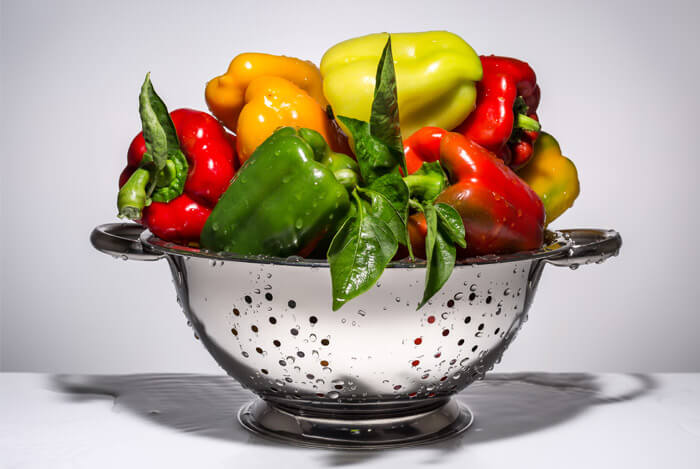
Chop up one large red, yellow, or green pepper to add to your quick breakfast egg bites, veggie quiche, or Rainbow Power Kale Salad.
You’ll find:
- 341 mg (569% of your DV) of vitamin C in yellow peppers
- 209 mg (349%) in red peppers
- 132 mg (220%) in green peppers
Up Your Protein
Enjoy these two protein-rich foods to reach your daily goal.
8. Dairy
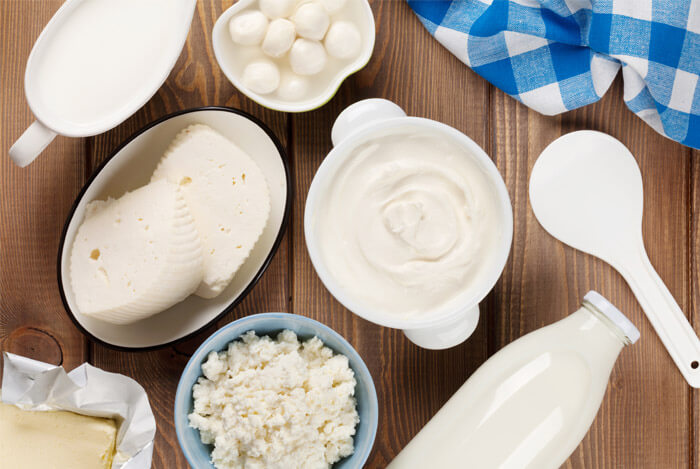
You’ll also find protein in dairy sources such as milk, yogurt, and cheese.
Try eating one or two servings of milk or dairy every day. You could try a healthy Greek yogurt parfait, a cup of cottage cheese with fruit, or a slice of Swiss cheese with an apple.
Essential Fatty Acids
Women who regularly consume omega-3 fatty acids have better fertility outcomes.
Omega-3s also help those struggling from PCOS, endometriosis, and uterine fibroids, as one study determined.
Don’t forget: omega-3s are going to be essential for your baby’s brain, eye, and spinal development when you do conceive.
9. Chia Seeds
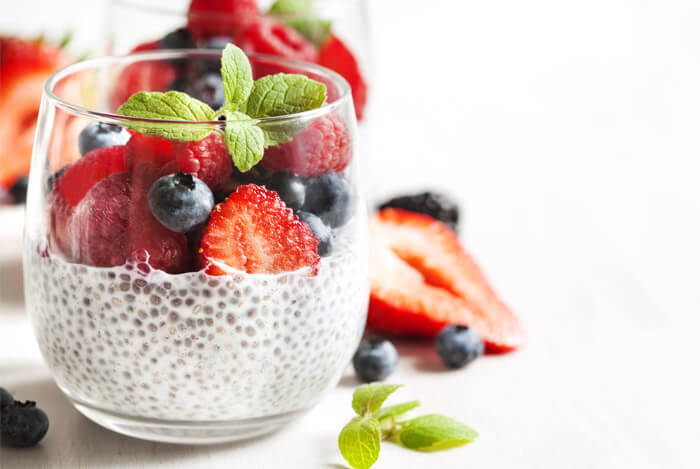
Oh how I love chia seeds. A 1 oz portion of these tiny nutritional powerhouses will give you 4915 mg of essential omega-3 fatty acids!
Try making a delightful chia seed pudding to sneak in your daily dose of omega-3s.
10. Walnuts

All it takes is a quarter-cup of walnuts to deliver 113% of your daily value of omega-3s.
Snack on unsalted walnuts or add them to your banana overnight oats.
Folic Acid
Folic acid is standard in multivitamins for women in their childbearing years because it can reduce the risks of neural tube birth defects such as spina bifida by “50% to 70%” even before a woman knows she’s pregnant.
See, neural tubes form a mere three to four weeks after conception, which is around the time a woman would notice a missed period.
A woman needs stores of folic acid to safeguard the healthy development of her baby’s brain and spine before she supplements with prenatal vitamins.
Make sure your multivitamin has at least 400 mcg of folic acid, especially if you’re actively trying for kids, and eat more of these next foods.
11. Asparagus
Despite the funky smell your pee will have, eating one cup of cooked asparagus supplies you with “62 mcg of folic acid, which accounts for approximately 65% of your daily needs”.
12. Broccoli
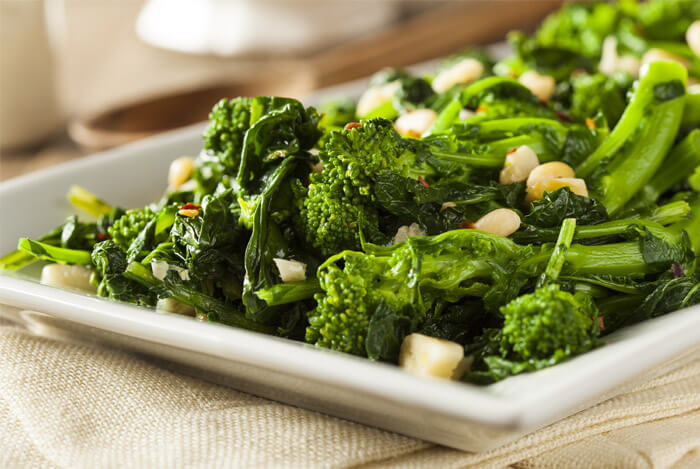
Half a cup of cooked broccoli will dish up 84.2 mcg of folate (21% of your RDI).
Best Fertility-Boosting Foods for Men

Fertility isn’t just a female problem.
According to a National Survey of Family Growth, 3.3-4.7 million men under the age of 45 saw a fertility doctor and 18% of them were diagnosed with an infertility problem.
There are a few critical vitamins and minerals hopeful dads-to-be should be consuming to increase their chances of hitting the target.
Vitamin C
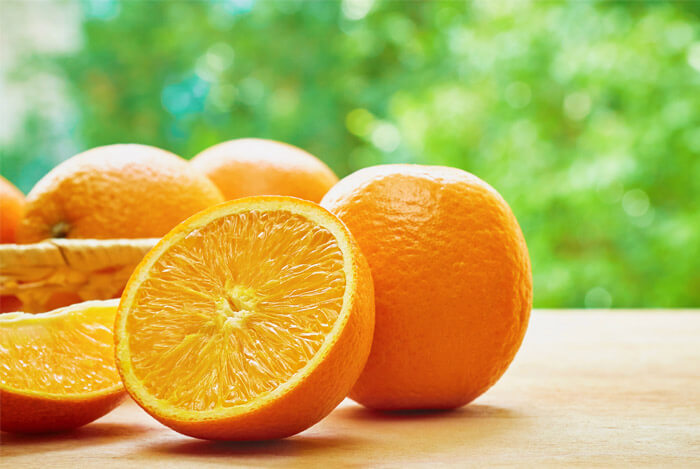
Just like women, men need ample amounts of vitamin C for healthy reproduction efforts.
One study discovered that when infertile men were given 1,000 mg of vitamin C twice daily, their sperm count and the sperm’s ability to navigate towards an egg were statistically improved.
Zinc

When men increase their zinc levels, they raise their sperm count and improve both the quality and function of the sperm to decrease chances of infertility.
Struggling to conceive is one of the hardest experiences you’ll ever have to go through.
But before turning to expensive and invasive fertility treatments, get your body to a healthy weight for fertility and add these super healthy foods to your (and your partner’s) diet.
The good news is that many of the items on today’s list are outstanding foods for increasing your libidio – so go find a room already!
